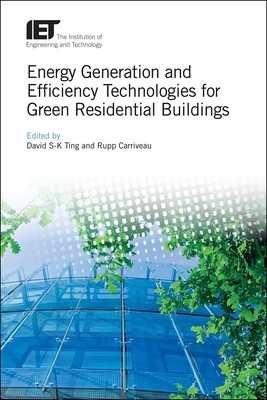
- We will send in 10–14 business days.
- Publisher: Institution of Engineering & Technology
- ISBN-10: 1785619470
- ISBN-13: 9781785619472
- Format: 16.5 x 23.9 x 2.3 cm, hardcover
- Language: English
- SAVE -10% with code: EXTRA
Energy Generation and Efficiency Technologies for Green Residential Buildings (e-book) (used book) | bookbook.eu
Reviews
Description
Residential buildings consume about a quarter of all energy (including electrical and thermal) in industrialized countries and emit around 20% of the carbon emissions there. Older and outdated heating and cooling technology causes high energy demand and, depending on building type, secondary causes can include ventilation and lighting. Technology is available to mitigate high energy consumption, and to enable the use of renewable or environmentally friendly energy, partly generated locally.
This book, written by international experts from academia as well as industry, compiles and describes several key technologies available to reduce a residential building's energy consumption. Key themes include local energy generation, such as the use of sunlight to reduce heating needs, and photovoltaics for electricity. Case studies are included in most chapters to provide real-world context for the technologies described.
EXTRA 10 % discount with code: EXTRA
The promotion ends in 19d.16:11:53
The discount code is valid when purchasing from 10 €. Discounts do not stack.
- Publisher: Institution of Engineering & Technology
- ISBN-10: 1785619470
- ISBN-13: 9781785619472
- Format: 16.5 x 23.9 x 2.3 cm, hardcover
- Language: English English
Residential buildings consume about a quarter of all energy (including electrical and thermal) in industrialized countries and emit around 20% of the carbon emissions there. Older and outdated heating and cooling technology causes high energy demand and, depending on building type, secondary causes can include ventilation and lighting. Technology is available to mitigate high energy consumption, and to enable the use of renewable or environmentally friendly energy, partly generated locally.
This book, written by international experts from academia as well as industry, compiles and describes several key technologies available to reduce a residential building's energy consumption. Key themes include local energy generation, such as the use of sunlight to reduce heating needs, and photovoltaics for electricity. Case studies are included in most chapters to provide real-world context for the technologies described.


Reviews